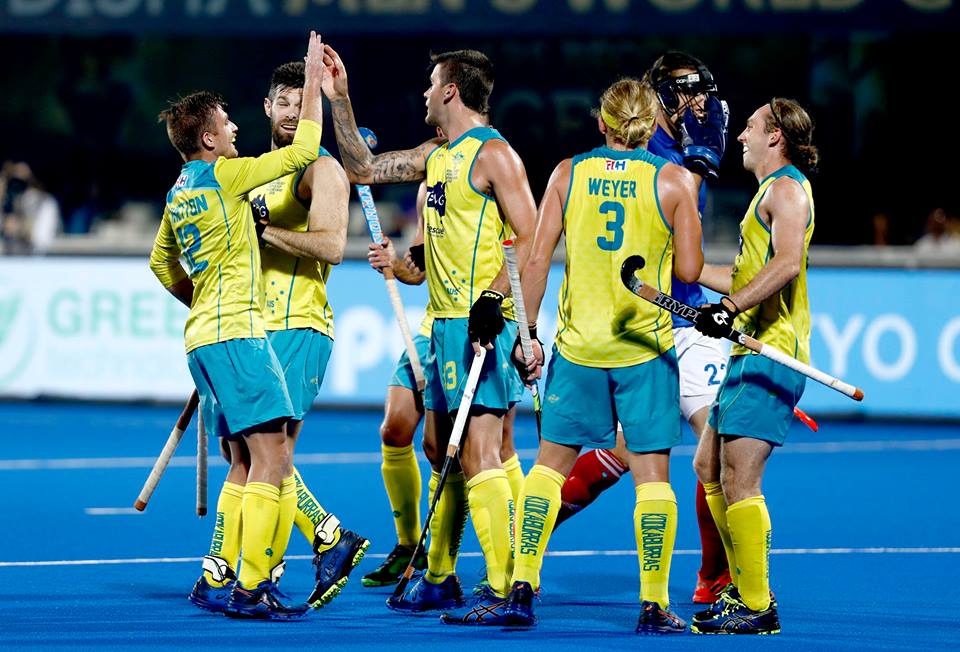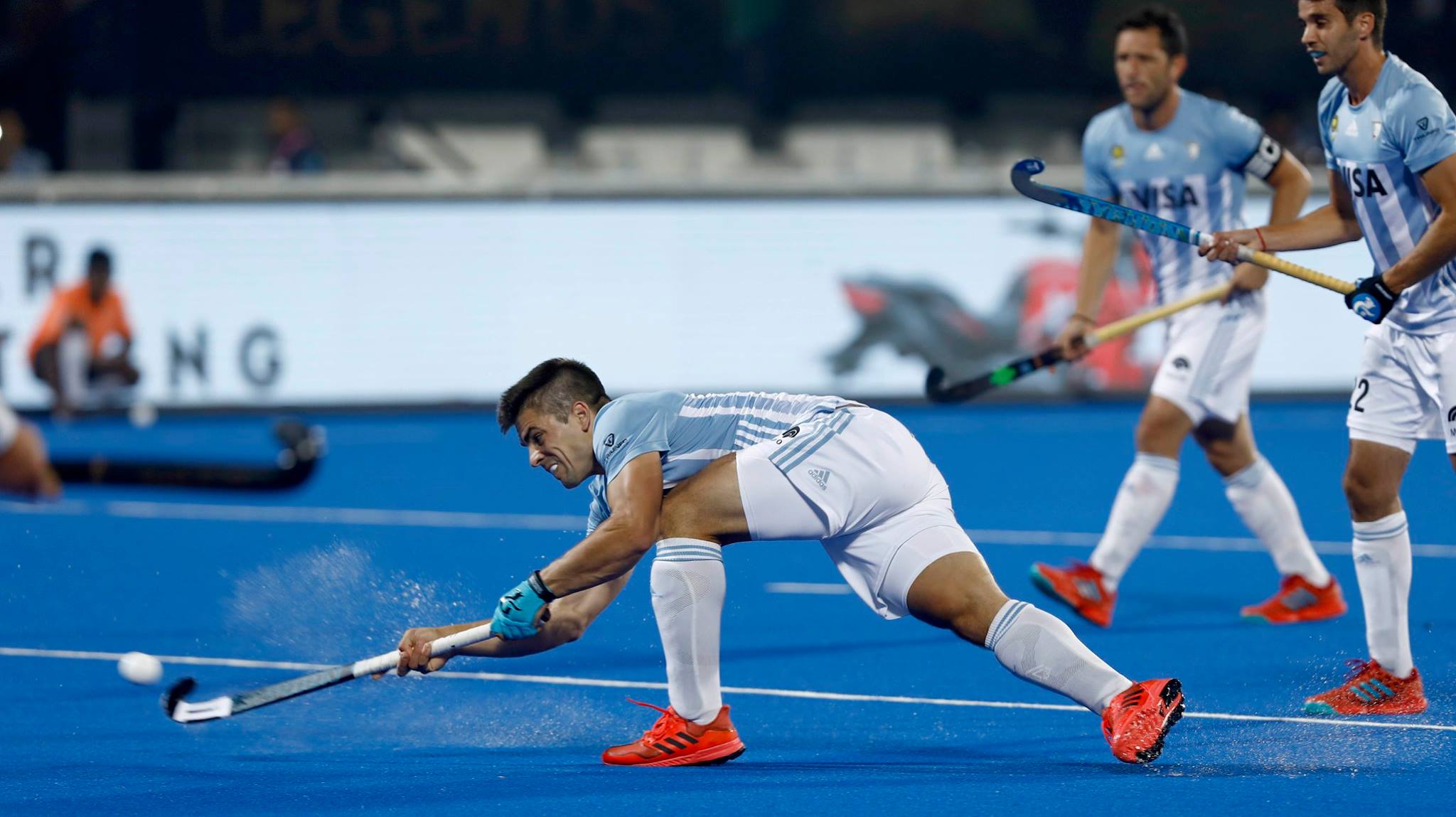Begin typing your search above and press return to search.
Featured
How ‘full press' hockey has shot into prominence

Modern hockey has transformed a lot over the past many decades – the pace with which the game is played across the globe in contemporary time has surely upped the ‘excitement’ quotient and prompted sports buffs ‘watch’ field hockey like never before. International teams have often devised newer ways to play field hockey, and one aspect that has come to the fore is how teams now adopt ‘full press’ hockey. Of course, the very mention of ‘full press’ hockey can be related to the Australia men’s hockey team – a tactic the Kookaburras have mastered it over the years and leveraged it to devastating effect against opponents running up massive winning margins. The Indian men’s hockey team over the last many years has taken a leaf out of the Australian team’s book and started playing ‘full press’ hockey. Of course, every international team does not bank on ‘full press’ hockey as a bigger focus area like the Aussies and India. It is critical to understand that ‘full press’ hockey is not something any team can embrace with ease as it can be physically very demanding to engage high-intensity hockey for all sixty minutes of play. Former Indian captain and four-time Olympian Dhanraj Pillay said ‘full press hockey’ comes ‘naturally’ to a team like Australia. “Attacking hockey is in the Australian team’s blood – their culture, as well as their weather, suits them to play ‘full press’ hockey. Kids in Australia from the age of six are taught to play attacking hockey, and it becomes a part of their playing structure as these youngsters rise through the junior and sub-junior ranks and get into the senior team.”  Team Australia (Photo: Hockey India) Pillay, who is also a four-time World-Cupper, said, unlike the attacking hockey of Australia, the focus of India and Pakistan hockey is more on skilful hockey.
Team Australia (Photo: Hockey India) Pillay, who is also a four-time World-Cupper, said, unlike the attacking hockey of Australia, the focus of India and Pakistan hockey is more on skilful hockey.  Argentina's Gonzalo Peillat (Photo: Hockey India) Indian men’s hockey team head coach Graham Reid said ‘full press’ hockey had been an integral part of the Australian men’s hockey team’s success over the years. “Australia have been dominating world hockey so consistently, and ‘full press’ hockey has had a significant role to play in it. High-intensity hockey is something Australians strong believe in and that is why they often rack up 5-0, 6-0, 7-0, 8-0 wins over not just mediocre or depleted sides, but even against top teams regularly.” Former Indian men’s hockey team coach Harendra Singh said the advent of rolling substitution rule and induction of four quarters in field hockey have helped teams like India to play ‘full press’ hockey effectively. “Look, every 15-minute quarter is followed by a two-minute break, coupled with the ten-minute half-time break. If you delve deep, you realise a player is playing a maximum period 27 to 31 minutes and at times 45 minutes because of the rolling substitution rule, which helps players stay fresh and play ‘full press’. It has enabled India to adopt ‘full press’ hockey in a big way.” Harendra was quick to point out that teams would be better off playing ‘full press’ hockey intelligently.
Argentina's Gonzalo Peillat (Photo: Hockey India) Indian men’s hockey team head coach Graham Reid said ‘full press’ hockey had been an integral part of the Australian men’s hockey team’s success over the years. “Australia have been dominating world hockey so consistently, and ‘full press’ hockey has had a significant role to play in it. High-intensity hockey is something Australians strong believe in and that is why they often rack up 5-0, 6-0, 7-0, 8-0 wins over not just mediocre or depleted sides, but even against top teams regularly.” Former Indian men’s hockey team coach Harendra Singh said the advent of rolling substitution rule and induction of four quarters in field hockey have helped teams like India to play ‘full press’ hockey effectively. “Look, every 15-minute quarter is followed by a two-minute break, coupled with the ten-minute half-time break. If you delve deep, you realise a player is playing a maximum period 27 to 31 minutes and at times 45 minutes because of the rolling substitution rule, which helps players stay fresh and play ‘full press’. It has enabled India to adopt ‘full press’ hockey in a big way.” Harendra was quick to point out that teams would be better off playing ‘full press’ hockey intelligently.
 Team Australia (Photo: Hockey India) Pillay, who is also a four-time World-Cupper, said, unlike the attacking hockey of Australia, the focus of India and Pakistan hockey is more on skilful hockey.
Team Australia (Photo: Hockey India) Pillay, who is also a four-time World-Cupper, said, unlike the attacking hockey of Australia, the focus of India and Pakistan hockey is more on skilful hockey. Pillay was categorical that it is ‘tough’ to sustain ‘full press’ hockey for all sixty minutes of play. “You cannot play ‘full press’ hockey for all 60 minutes, especially under hot and humid conditions as it can be very tiring and sap off your energy. So it is vital to hold the ball and play among your team members and be sensible enough to see when to attack and when to control the passage of play.” Every international side have its own strategies and not necessarily have to employ ‘full press’ hockey’ to get the desired results. Pillay cited an example of Argentina – a rapidly improving international men’s hockey side. “Argentina believes in compact hockey and prefers playing short passes and don’t play attacking hockey – the South Americans often look to earn penalty corners as they have some solid drag-flickers to do the goal-scoring job for them. I don’t think that there is anything wrong in looking for goals from PCs, if you are not a hundred per cent sure of scoring from the striking circle or any narrow angle.”“India-Pakistan hockey is more synonymous with skilful hockey - in India, our coaches tell boys to play skilful hockey. When we coach our youngsters, our focus is on first stopping the ball and then think whether you want to pass the ball, dodge or play among yourself. The Australians are excellent in basics like hitting and stopping – areas India has significantly improved in recent times," said Pillay.
 Argentina's Gonzalo Peillat (Photo: Hockey India) Indian men’s hockey team head coach Graham Reid said ‘full press’ hockey had been an integral part of the Australian men’s hockey team’s success over the years. “Australia have been dominating world hockey so consistently, and ‘full press’ hockey has had a significant role to play in it. High-intensity hockey is something Australians strong believe in and that is why they often rack up 5-0, 6-0, 7-0, 8-0 wins over not just mediocre or depleted sides, but even against top teams regularly.” Former Indian men’s hockey team coach Harendra Singh said the advent of rolling substitution rule and induction of four quarters in field hockey have helped teams like India to play ‘full press’ hockey effectively. “Look, every 15-minute quarter is followed by a two-minute break, coupled with the ten-minute half-time break. If you delve deep, you realise a player is playing a maximum period 27 to 31 minutes and at times 45 minutes because of the rolling substitution rule, which helps players stay fresh and play ‘full press’. It has enabled India to adopt ‘full press’ hockey in a big way.” Harendra was quick to point out that teams would be better off playing ‘full press’ hockey intelligently.
Argentina's Gonzalo Peillat (Photo: Hockey India) Indian men’s hockey team head coach Graham Reid said ‘full press’ hockey had been an integral part of the Australian men’s hockey team’s success over the years. “Australia have been dominating world hockey so consistently, and ‘full press’ hockey has had a significant role to play in it. High-intensity hockey is something Australians strong believe in and that is why they often rack up 5-0, 6-0, 7-0, 8-0 wins over not just mediocre or depleted sides, but even against top teams regularly.” Former Indian men’s hockey team coach Harendra Singh said the advent of rolling substitution rule and induction of four quarters in field hockey have helped teams like India to play ‘full press’ hockey effectively. “Look, every 15-minute quarter is followed by a two-minute break, coupled with the ten-minute half-time break. If you delve deep, you realise a player is playing a maximum period 27 to 31 minutes and at times 45 minutes because of the rolling substitution rule, which helps players stay fresh and play ‘full press’. It has enabled India to adopt ‘full press’ hockey in a big way.” Harendra was quick to point out that teams would be better off playing ‘full press’ hockey intelligently. Harendra, who was the coach of the men’s hockey team at the 2018 Asian Games, feels that Australia play ‘full press’ hockey intelligently. “Of course, attacking hockey is Australia’s forte, but even they employ ‘full press’ hockey intelligently mixing ‘full press’ with half press. I can see Belgium adopting the Australian style of hockey focussing on zonal marking and trying to snatch the ball from the opponent. Another thing you see with Belgium is that they always go for the second or third pass to intercept or tackle and never go for the first pass - a style of hockey Australia are known for.”“If you are not playing ‘full press’ hockey it does mean that a team is playing defensive hockey. It is hugely challenging to play ‘full press’ hockey for all sixty minutes of play because there could be one break and you may end up conceding a goal. Therefore, it is critical to mix full press with the half press as it helps in keeping the opponent guessing,” he opined.
Next Story






